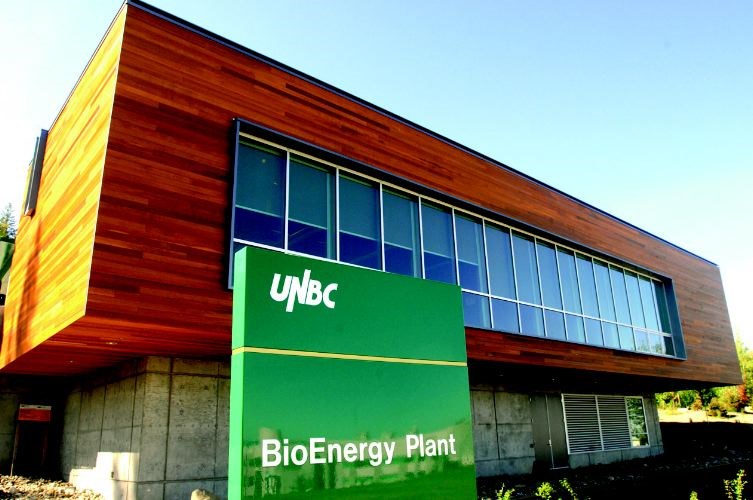An entire university campus off the energy grid? That would be off the charts.
A new project to produce electricity using wood waste bioenergy is being discussed at UNBC and if it becomes a reality, it might not be enough to make the campus entirely energy self-sufficient. But the potential spin-off effects could have far-reaching effects as an energy solution for rural communities that do not have dependable sources of hydroelectric power.
"The key to efficiency in using biomass as a fuel source is [to produce] heat and power -- we started with heat and the next phase of this would be electrical generation," said Rob Van Adrichem, UNBC's vice-president of external relations.
"The reason we are doing this is not because it makes the most sense for Prince George but because we want to kind of be a model for communities that are off the grid entirely or are part of the grid but experience unreliable service.
"There are a lot of First Nations communities and non-native communities in that situation. Especially in B.C., and in a lot of the western provinces, one thing they have in common is they do have a lot of biomass around them in the form of trees. We're working to make this a model for how remote communities can bring their energy production home, instead of trucking in diesel, which has a significant financial and carbon cost."
University officials say the green electricity project has potential to spawn growth of an industry at UNBC dedicated to making advances in biochar technology that could be applied anywhere for businesses that want take advantage of renewable energy in their projects.
The biomass energy system at UNBC burns wood waste known as hog fuel to produce heat. For electricity production, that energy would be used to spin turbines that would make the electricity. Heat produced in the process would be used for allow food production in the UNBC greenhouses and to heat the two campus residences.
Biochar is created through a process called pyrolysis, burning wood waste without oxygen, the next step before the biofuel is reduced to ash. Biochar is carbon-rich and can be used to increase soil fertility, reduce soil acidity and reduce the need for irrigation and fertilizers. It also has filtration properties that could be used to make a marketable product.
UNBC would continue to be hooked up to hydro lines because an outside source of electricity would still be needed during peak times of energy usage at the campus and during times the biomass heating system is down for maintenance. Van Adrichem said the campus has been designed so that if excess electricity is produced that power could be sold over the grid.
Construction of the facility could hinge on whether the federal government will commit to funding half of the estimated $30 million cost. UNBC is now in the initial stages of seeking funding from Natural Resources Canada to develop the project.
UNBC started taking advantage of biomass heat in June 2009, when it opened a wood pellet-burning plant to heat the forestry lab. The main components of UNBC's $22-million bioenergy heating project began operating in March 2011, providing 85 per cent of the heat the campus needs.
Natural gas is still used as a heat source at UNBC, especially on days of bone-chilling temperatures like Tuesday, and during times when the biomass system is in a shutdown phase. Regular system maintenance is needed because the hog fuel used is not as clean-burning as natural gas.
"In many ways, the research that a community would be most interested from us is hearing from our maintenance people how to run this thing -- that's the kind of value this project has," said Van Adrichem. "
"What we started with bioenergy could transform UNBC. In many ways, it's brought us more national exposure than anything we've ever done and I think if we continue to develop opportunities around sustainable energy production with a fuel that's literally on our doorstep, it's huge for us."



